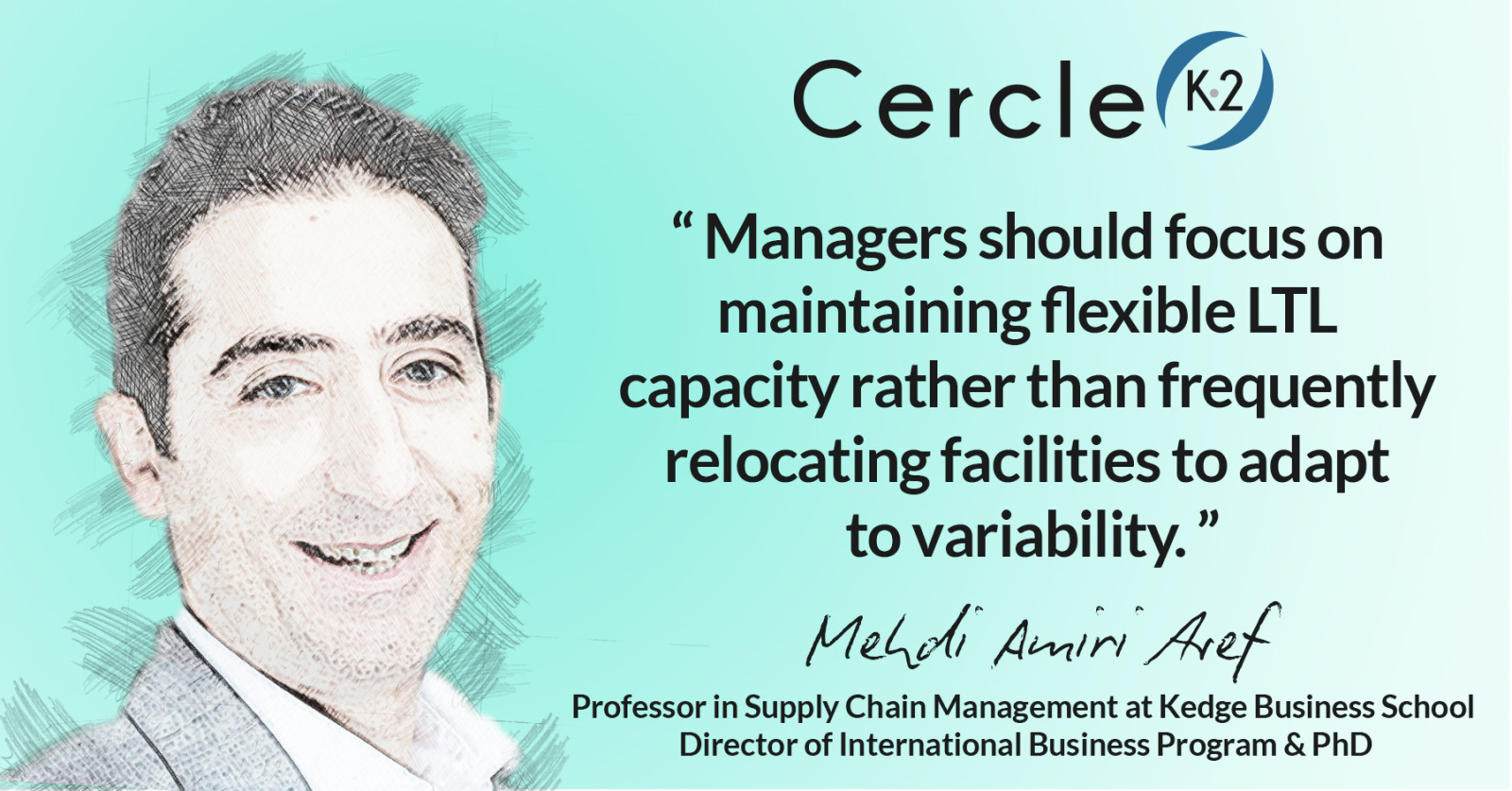Turning Retailers into Reverse Hubs: Unlocking Cost Savings in Circular Supply Chains
08/10/2025 - 2 min. de lecture

Cercle K2 neither approves or disapproves of the opinions expressed in the articles. Their authors are exclusively responsible for their content.
Mehdi Amiri Aref is PhD in Industrial Engineering, Professor in Supply Chain Management at Kedge Business School and Director of International Business Program.
---
Modern supply chains are increasingly required to integrate forward logistics (production and distribution) with reverse logistics (collection, recycling, and remanufacturing) due to the growing influence of circular economy principles, stricter environmental regulations, and the expansion of deposit-return schemes. Retailers now frequently act as hybrid facilities, simultaneously selling products and collecting returns, which helps reduce handling and transport costs. Such deposit-return models have been widely implemented in Germany, Norway, and Sweden, where retailers serve as key collection points, and similar systems exist in Canada and parts of the United States, particularly for beverage containers and electronic waste. France is adopting these practices, making it a relevant testing ground for integrated closed-loop network designs.
Designing such reverse supply chain networks is challenging because it requires joint strategic (facility location, fleet sizing) and operational (inventory, production, and return flow) decisions. Traditional approaches solve these decisions separately, often resulting in higher total costs and under-utilised resources. The complexity increases in multi-period, multi-echelon networks, where forward and reverse flows interact dynamically over time. To address this, we developed two matheuristic algorithms to efficiently handle large, integrated network design problems. The approach is suitable for the FMCG and retail supply chain management. Our method is validated through a realistic data from Carrefour, a major French retail chain, encompassing production plants, recycling facilities, and hypermarkets located across metropolitan France, where retailers act as hybrid sales and collection points for returned products. Different-sized instances, ranging from small local to large national networks, tested the scalability of the proposed matheuristics under real operational conditions. Cost parameters, transportation capacities, and demand/return rates reflected industrial realities to assess the cost-effectiveness and feasibility of the integrated model.
Results showed that hybrid retailer-collection centres were consistently selected, confirming their key role in reducing collection and transport costs. Retailers near customers handled larger return volumes, improving reverse logistics efficiency. The fleet mix was optimally balanced, with full truckload (FTL) vehicles operating near full capacity (~99%) primarily on links from/to (re)manufacturing sites, while less-than-truckload (LTL) trucks operated at 40–72% capacity mainly on routes from/to Carrefour hyperstores. Establishing collection centres close to remanufacturing facilities was identified as more cost-effective, guiding the selection of retailers with hybrid features under the return-to-retail concept.
Strategic facility locations favored remanufacturing sites close to high-return areas, while regional consolidation hubs emerged to centralize flows, lowering handling and transport costs. Inventory was minimized at retailers to reduce local storage expenses, with upstream facilities absorbing excess stock. The influence of fleet size and truck capacity utilisation was significant: smaller fleets improved utilisation on routes to hybrid retailers, while larger fleets were more efficient from consolidation hubs to (re)manufacturing sites. Using the LTL policy for transporting returns from retailers to consolidation hubs and the FTL policy for moving consolidated returns from hubs to (re)manufacturing sites proved economically optimal. Overall, integrated planning prevented over-investment in facilities and fleet, and transportation remained the largest cost factor, highlighting the importance of optimized routing and fleet sizing. The integrated approach yielded up to 9% annual cost savings (equivalent to approximately 1M € savings) on average, compared to sequential planning, demonstrating the tangible benefits of considering retailers as active partners in the closed-loop system.
When incorporating demand uncertainty, the model showed robustness in strategic facility locations, which remained stable despite fluctuations. Managers should focus on maintaining flexible LTL capacity rather than frequently relocating facilities to adapt to variability. The case study also highlights that decentralisation should be adopted when fleet size decreases, helping determine the optimal number of hybrid retailers and collection centres in the network. The integrated optimisation model outperformed sequential approaches by reducing total costs by about 9% and improving fleet and facility utilisation. These results underline the importance of adopting integrated decision-making tools that combine location, fleet, and inventory management to achieve both economic efficiency and sustainability goals in closed-loop supply chains.
---
Source:
08/10/2025















